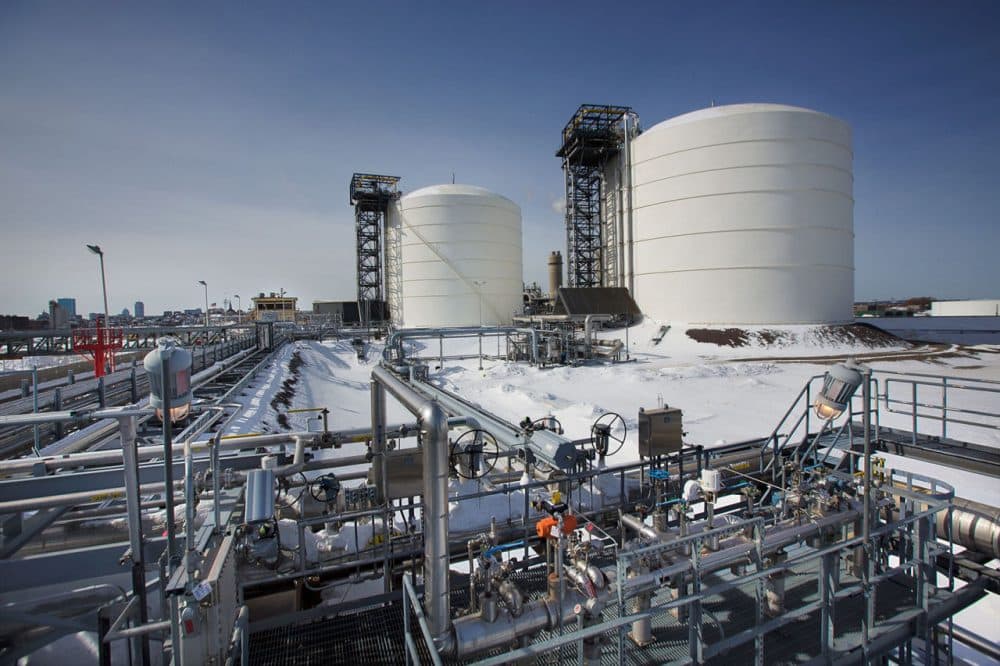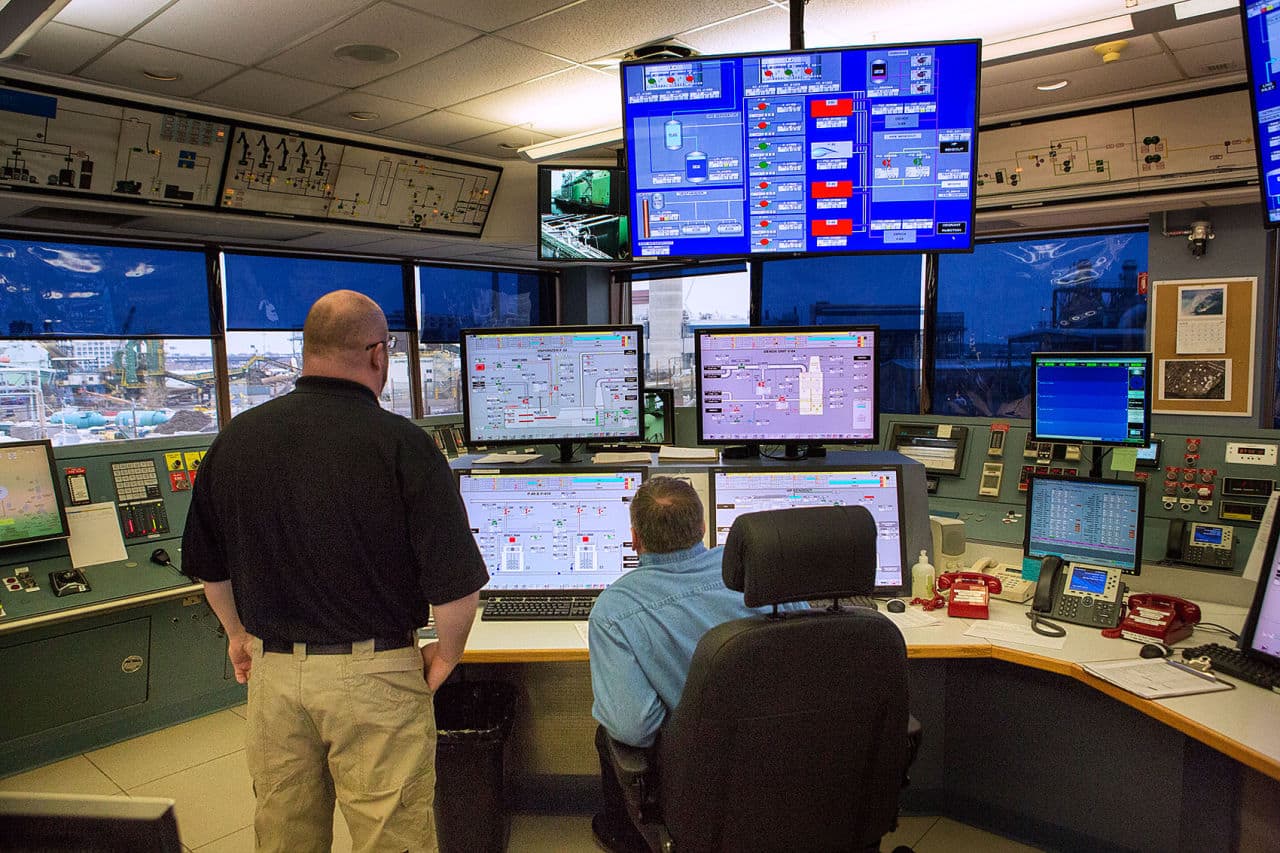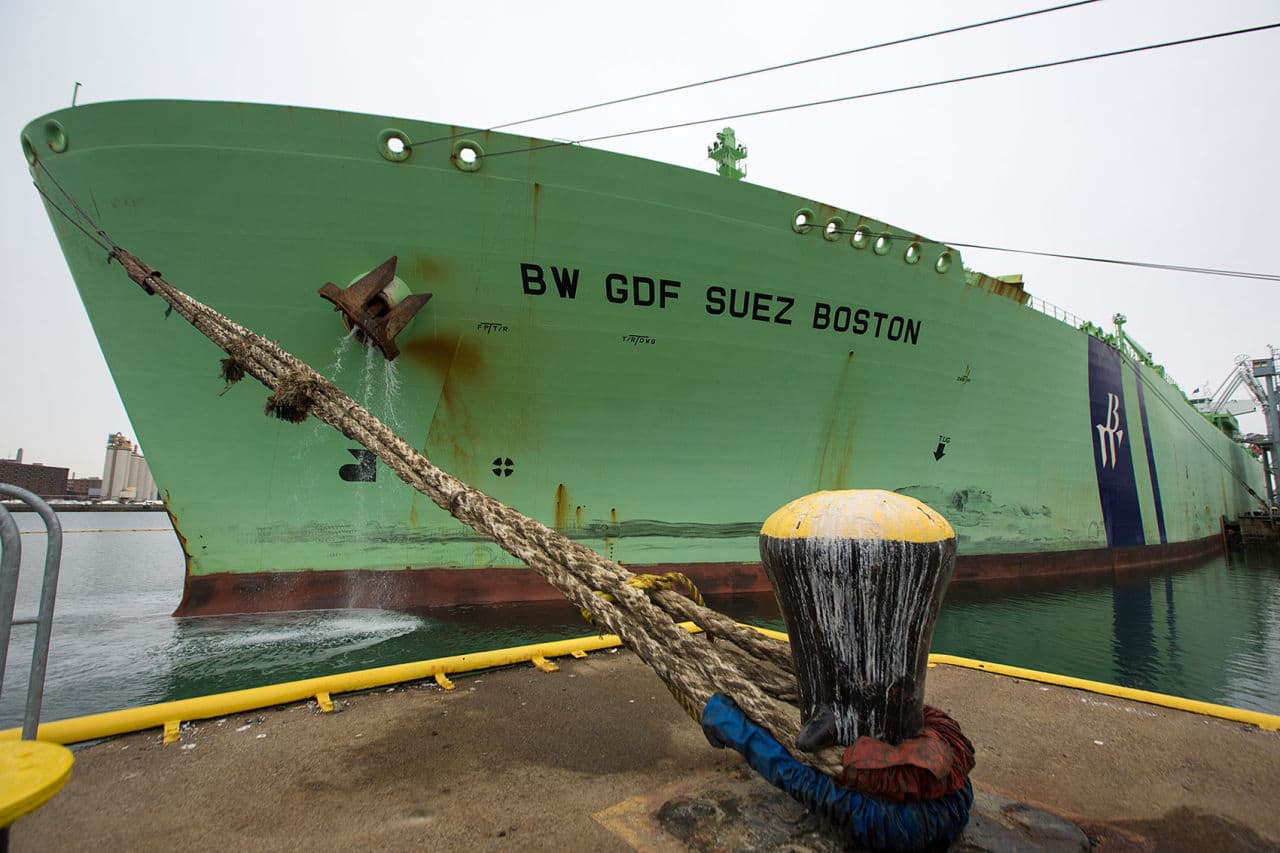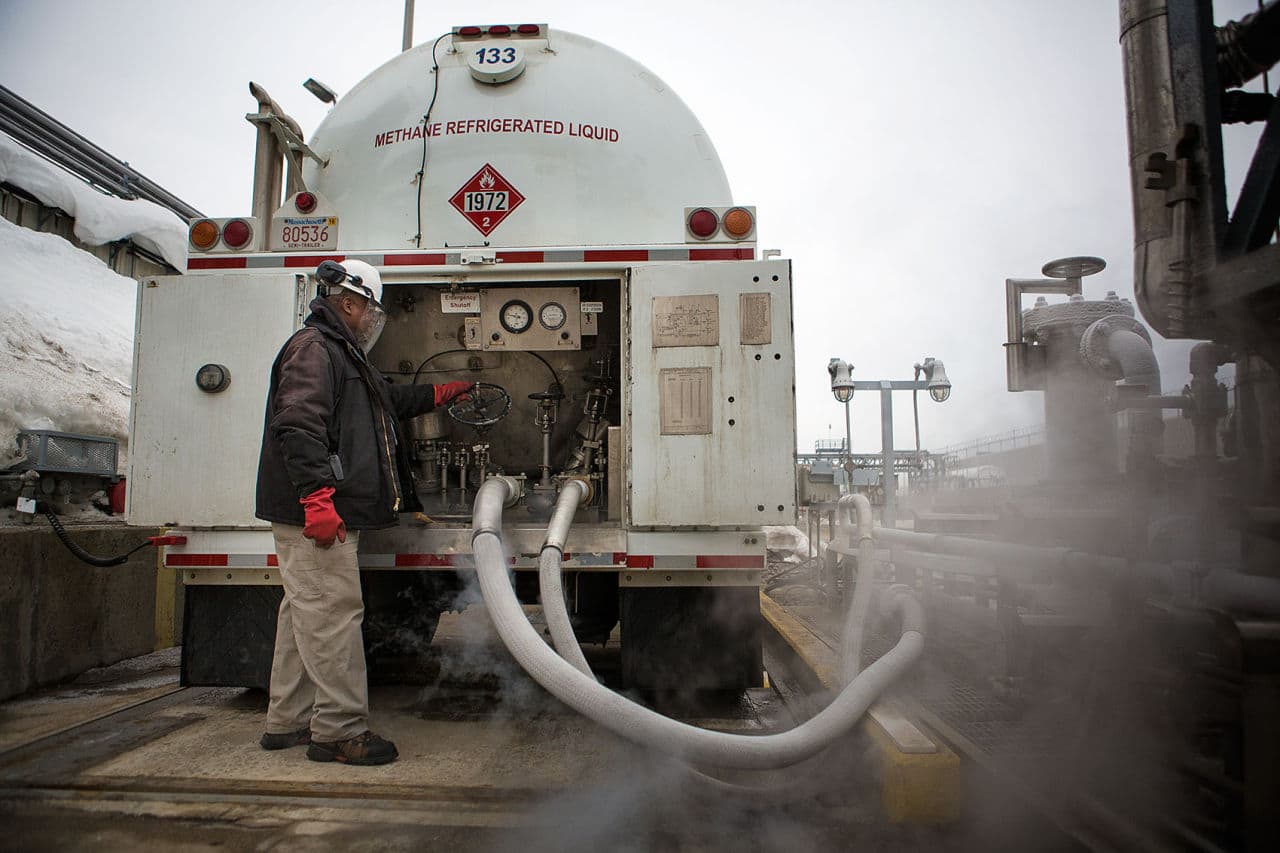Advertisement
Old System, New Solution?: Liquefied Natural Gas Could Be Pipeline Alternative

Second in a two-part series. Here's Part 1.
EVERETT, Mass. — In recent years there has been a revolution in the way New England generates its electricity. Since 2000 the amount produced by burning natural gas has tripled. And today, more than half of our electricity comes from gas imported from outside the region.
But as the use of gas has soared, so too have electric bills here, especially in the dead of winter. That's when the demand for gas for heating and electricity is highest, creating bottlenecks along interstate pipelines.
The transformation of our electric generating system has ignited a contentious debate over whether additional pipeline capacity is needed.
Supporters call natural gas a bridge fuel that can help supply the region with electricity until renewable sources become feasible. But opponents say pipelines are a bridge too far and a barrier to a clean energy future.
One possible alternative is natural gas — in a different form. And one alternative to pipelines is located in Boston Harbor along the Mystic River, not far from Logan International Airport.

It's called the Everett Distrigas LNG terminal, and it's the oldest terminal of its kind in the United States. For over 40 years ships from foreign countries have been supplying New England with liquefied natural gas.
"Ships come from under the Tobin Bridge into us here. They dock at our dock. And LNG is pumped out of the ships, it's pumped through a pipeline that then delivers LNG into our tanks," said Anthony Scaraggi, vice president of operations for GDF Suez, which owns the facility.
Everett's two LNG tanks, each 180 feet tall, are actually giant thermoses. These days they contain LNG imported from Trinidad and Tobago, where the gas is cooled to -260 degrees Fahrenheit, turned into a liquid — reducing the volume by 1/600th — then shipped to the two Everett tanks.
Total natural gas capacity here is 3.4 billion cubic feet, Scaraggi says.
The Everett LNG tanks contain enough natural gas to heat and light all of Massachusetts for a day, and there are two more LNG terminals, under the sea, 12 miles off the coast of Gloucester Harbor. Built just a few years ago, they've gone virtually unused until this winter, when one received a shipment.
Advertisement

Scaraggi says LNG can supply the region's energy needs without building pipelines that cost billions.
"They're building a solution for a 365-day problem when there's only a 30- to 40-day problem," Scaraggi said. "Last year it was 42 days."
So far this year, it's about the same. It's only on a few of the very coldest days, when heating and electric utilities compete for capacity on the pipeline, that there are bottlenecks. Most of the time there's an excess of pipeline capacity.
In fact, operators of the Maritimes and Northeast Pipeline, which currently brings gas from Canada to the region, recently filed for permission to reverse the flow. That would enable the pipeline to carry cheap shale gas from Pennsylvania, through Massachusetts, back to Canada, and perhaps beyond.
"It's very funny," Scaraggi said. "When you add up all of the capacity they want to bring into New England it's multiples of the capacity that we actually use in New England. I don't know how you do that. So that's classic overbuild."
And Scaraggi says overcapacity, underutilized pipeline can cost big bucks to consumers. Rather than spend billions of dollars on new infrastructure, he advocates using the current LNG system of ships, trucks, storage tanks and pipelines to serve the region. He says it's already paid for and can be shut down more easily, as renewables replace fossil fuels.
"And we can push gas from east to west, very, very easily," he said. "So there is no bottleneck for us east to west. So we can stick a huge amount of gas into the system, east to west, and back feed it."

But it's leaders of the natural gas industry itself, and advocates of LNG, who are urging caution when it comes relying on the existing system.
"We have the highest concentration of liquefied natural gas in the country right here," said Tom Kiley, president of the Northeast Gas Association, a trade group of which Distrigas is a member.
Kiley notes that when the gas is turned into a liquid, it's usually a lot more expensive. And if utilities import more LNG, they'll need to build additional storage tanks. Kiley says there are pros and cons to the tried and true LNG system, and adding new pipelines.
"What is the cost-benefit analysis of doing that, versus tying into an interstate pipeline company?" he asked. "Those are the types of scenarios that these companies are reviewing all the time."
The scenarios can shift rapidly and unpredictably. The cost of natural gas and LNG is volatile, subject to geopolitics, and the stakes are enormous. On the line: tens of billions of dollars in energy and infrastructure, and New England's contribution to global climate change.
"If we put that money into natural gas now, we can expect that our system's not going to look much different in 2050 than it does today," said regional energy analyst Shanna Cleveland, who's been following the situation for a long time, first at the Conservation Law Foundation, and now at Ceres, which tries to bridge business investors and environmental groups.
"This is really a once-in-a-lifetime opportunity, and we're standing right here at the point where we can decide what our system will look like in the future," she added.
In just a few weeks, we'll get a glimpse of our future. That's when New England governors convene in Boston at a regional energy summit and decide whether we need more natural gas pipeline. If so, how much, and for how long?
Correction: An earlier version of this post incorrectly reported Tom Kiley's last name. We regret the error.
This article was originally published on March 11, 2015.
This segment aired on March 11, 2015.
